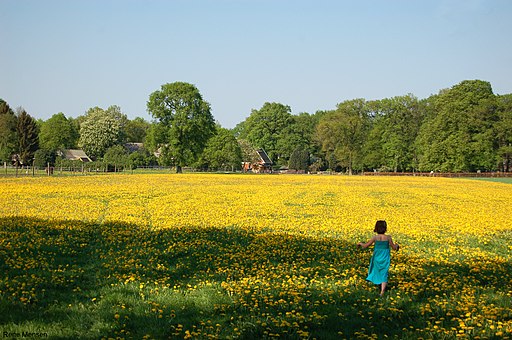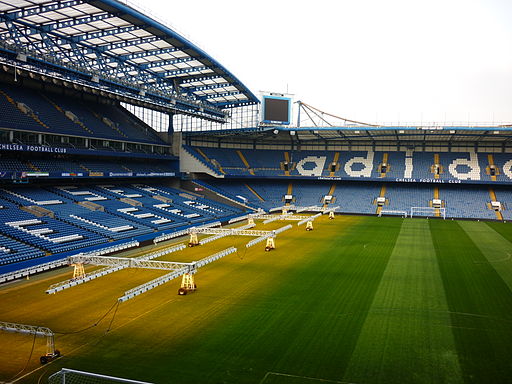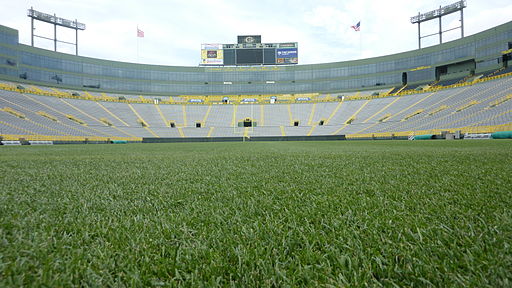Why Worry
― from Ray Bradbury’s 1957 novel Dandelion Wine.
There is no end to the availability of advice, how-to manuals, and chemical poisons to help gardeners rid their lawns and garden beds of crabgrass and dandelions, two weeds most prevalent in late spring and early summer. Are they weeds? Only the individual gardener can say. If the gardener lives under the watchful eyes of a homeowners’ association, the association will say.

A meadow full of dandelions in The Netherlands; photo by Alias 0591 from The Netherlands. A meadow full of crabgrass would not be nearly as beautiful.
What’s a conscientious, organic (or mostly so) gardener to do then in the good old summertime when there are patches of crabgrass and dandelions in the lawn? Well, if an hour’s worth of hand weeding once a week won’t take care of the situation, maybe that mostly organic gardener could consider turning some of that lawn on the property over to some other purpose, so that it’s more manageable. Either way, the situation calls for a more relaxed tolerance level, especially in the summer. A suggested tolerance level would be one that calls for lying in a hammock under a shade tree, drinking from a cool glass of dandelion wine, reading a good book (see above), and listening to the peaceful sound of the crabgrass growing.
― Izzy 
From 1988, “Don’t Worry, Be Happy”, by Bobby McFerrin, with Robin Williams and Bill Irwin along for the clowning.


